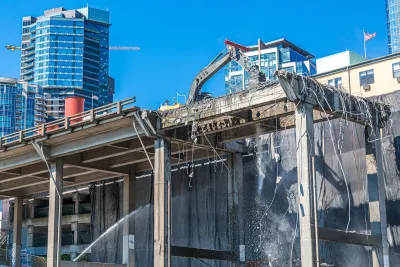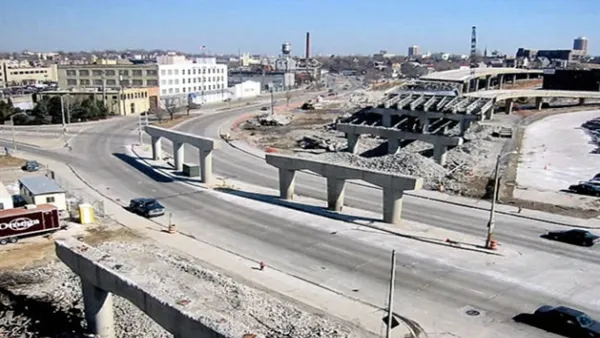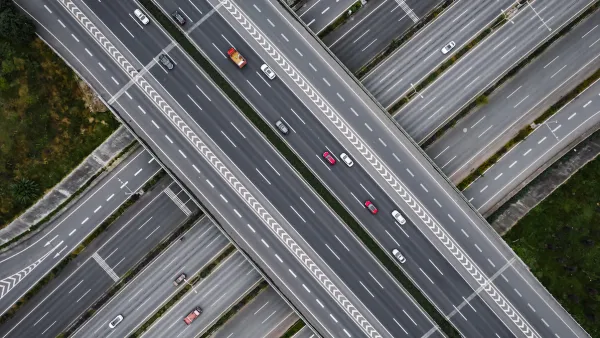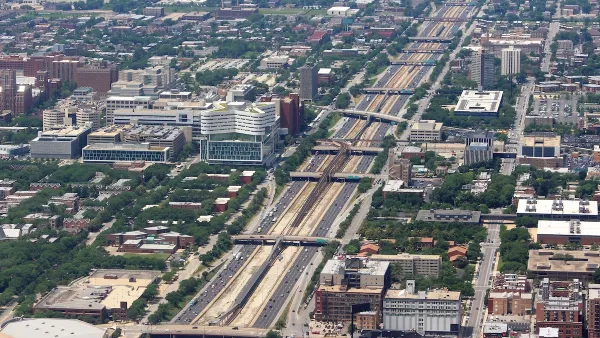Resistance from state transportation departments and precarious funding sources mean highway removal projects are few and far between, despite their benefits.

Highway removal: why isn’t it happening in more places? Joe Harrington poses this question in Next City, noting that “The benefits [of removal] for the communities living along highways are obvious: People have experienced health, environmental, economic and mobility harms for the last 70 years. Communities originally displaced lost billions in generational wealth opportunities in the ensuing displacement and residents today continue to bear harm.”
Harrington lists several reasons that highway removal is not more popular yet. These include “sluggish policy responses” at the federal level that have failed to keep up with the data. Even the Reconnecting Communities program, which is specifically aimed at removing highways, has not resulted in many actual removals. According to Harrington, “There’s an urgent need for federal guidance to leverage successful highway removal initiatives, enabling more cities to pursue this transformative approach.”
Highway removal projects are also stymied by an outdated mindset pervasive in state transportation departments. “Their entrenched traffic engineering mindsets, earmarked funding and institutional resistance to change impede efforts to promote alternatives to highways, from Minnesota to Texas.”
For Harrington, “Current procedures and technical practices—built by and for highway projects—need to shift as we focus on restoring divided neighborhoods, advancing our climate resilience and creating equitable cities.”
FULL STORY: It’s time to start removing highways. For real this time

National Parks Layoffs Will Cause Communities to Lose Billions
Thousands of essential park workers were laid off this week, just before the busy spring break season.

Retro-silient?: America’s First “Eco-burb,” The Woodlands Turns 50
A master-planned community north of Houston offers lessons on green infrastructure and resilient design, but falls short of its founder’s lofty affordability and walkability goals.

Delivering for America Plan Will Downgrade Mail Service in at Least 49.5 Percent of Zip Codes
Republican and Democrat lawmakers criticize the plan for its disproportionate negative impact on rural communities.

Test News Post 1
This is a summary

Test News Headline 46
Test for the image on the front page.

Balancing Bombs and Butterflies: How the National Guard Protects a Rare Species
The National Guard at Fort Indiantown Gap uses GIS technology and land management strategies to balance military training with conservation efforts, ensuring the survival of the rare eastern regal fritillary butterfly.
Urban Design for Planners 1: Software Tools
This six-course series explores essential urban design concepts using open source software and equips planners with the tools they need to participate fully in the urban design process.
Planning for Universal Design
Learn the tools for implementing Universal Design in planning regulations.
EMC Planning Group, Inc.
Planetizen
Planetizen
Mpact (formerly Rail~Volution)
Great Falls Development Authority, Inc.
HUDs Office of Policy Development and Research
NYU Wagner Graduate School of Public Service





























